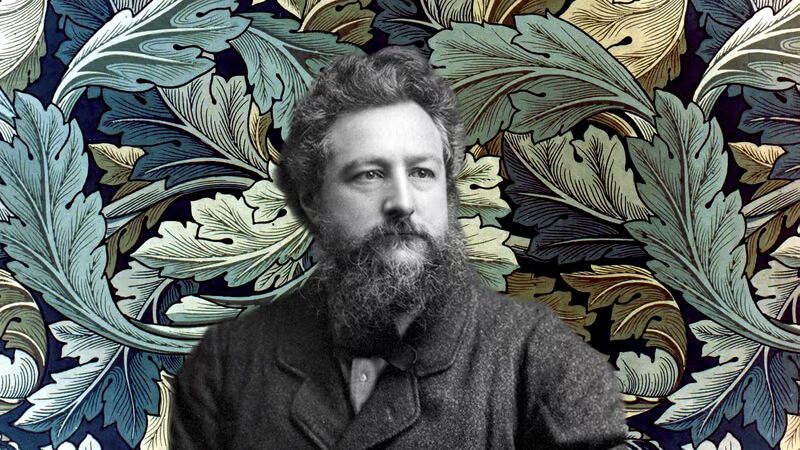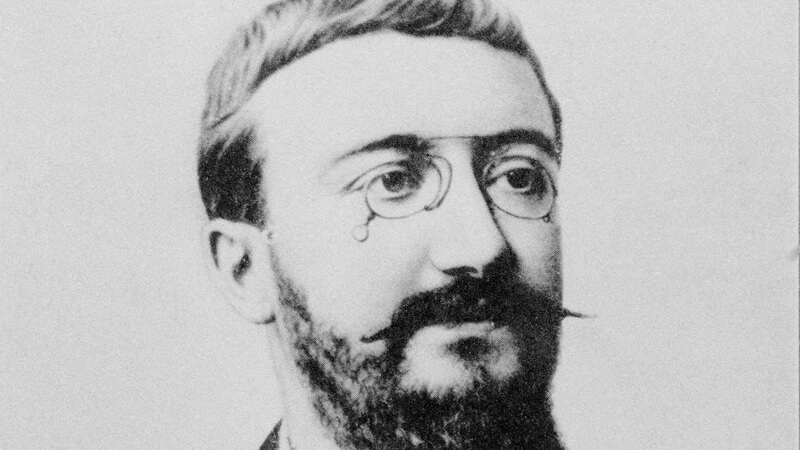Writer, social reformer, designer and English artist who through his literary, theoretical and artistic work tried the renewal of the culture recovering the spirit of medieval arts and crafts.
As a designer and craftsman, his work would have great influence on book design, the art of printing, the visual arts, and industrial design of the nineteenth century. His social ideology, of utopian sign, was collected in theoretical writings and in novels like News of no part (1890).
See Also: Biography of Naoya Shiga
Biography of William Morris
- Born:24 March 1834, Walthamstow, London Borough of Waltham Forest, United Kingdom
- Died:3 October 1896, Hammersmith, London, United Kingdo
- Spouse: Jane Morris (m. 1859–1896)
- Known for:Wallpaper and textile design, fantasy fiction / medievalism, socialism
- Children: May Morris, Jane Alice Morris
- Education: Exeter College, Oxford, Marlborough College, University of Oxford
The son of a merchant who had grown rich in the mechanical industry, barely introduced into Victorian England, and always fought by Morris himself, who considered it to be the cause of the inhuman living conditions of the workers, he studied at Oxford after a quiet childhood passed between forests and meadows and a severe adolescence in the school.
At Oxford he met the pre-Raphaelite painter E. Burne-Jones, whose romantic religiosity was to produce in him mystical crises, soon dominated by reflection and his love for life. His thinking was defined from 1853 to 1855.
The strong influence produced on him by the preaching of J. Ruskin, and his discovery of the Gothic in the cathedrals of France and England, directed him towards a “return to the Gothic”, based on social reasons of libertarian character, and therefore lay.
This was the most original feature of his ideology, which, in the political arena, led to his adherence to the Manifesto of Marx.
The free corporate associations of the workers, and not the cathedrals, were the fundamental motif of their choice of the Gothic period as an exemplary human period and from which it was necessary to recover the system of artisan production (“… an art made by the people and for the people it constitutes the happiness of those who believe and of those who use it … “); he emphasized with this his aversion to the machinery of the Industrial Revolution.
His aesthetic and social ideology proposed to end the distinction between “the great art” and “minor arts”, to revitalize the manual work and to promote and to realize an art for the whole society and not only for the elites.
He faced the industrial worker, who had no personal contact with his materials, the medieval craftsman felt, according to Morris, work as joy and beauty. For all this he was described as utopian and visionary.
In 1861, with a group of friends, including Rossetti and Burne-Jones, he founded the Morris, Marshall, Faulkner & Co. decoration company, which was dedicated to the production of stained glass, tapestries, carpets and handicrafts in general, designed by the artists themselves and made by hand.
The group of “Pre-Raphaelites”, who had preceded him in the same battle, later collaborated with him in the laboratory of applied art and adornment called “Arts and Crafts”, as well as in the movement that continued it.
Morris had squandered his own money on this play, but the company, idealistic and virtually paradoxical, failed; his name, however, had become famous. It was then that Morris went down to the street, devoting himself to the social struggle, while, on the other hand, he shone for his literary works.
He had begun in 1854 to write poetry, and in 1858 he published a collection of them, The Defense of the Queen Geneva and other poems. This was also, of course, the subject of the only painting of his pictorial work, Queen Geneva, which perfectly corresponds to the ideals of the pre-Raphaelite group.
In 1867 published the life and death of Jason, epic that narrates the adventures of the Argonauts. The Terrestrial Paradise (1868), considered by JL Borges the greater work of Morris, consists of a series of narrative poems based on classic and medieval sources.
In the prologue, entitled “The Vagabonds”, he sings “certain noble Norwegian sailors” who are going to the West seeking the terrestrial paradise and, coming to an unknown land, live there in the midst of a strange people, and there they die.
For them and their guests are supposed to sing the 24 poems, alternately placed in the mouth of one of the elders of the city and one of the navigators. They are poems of a novel nature, inspired by classic and Gothic legends: “Atalanta”, “Man born to be king”, “The fate of King Acrisio”, “The story of Cupid and Psyche”, “The love of Alcestes” “Looking at the hawk”, “Lovers of Gudrun” (the most notable), etc. The poems are written in the so-called royal rhyme, that is, in stays of seven verses.
In 1875 he managed to complete the long and arduous undertaking of translating the Aeneid into English verses; in 1887 he did the same with the Odyssey.
In the meantime, in 1876, a long epic poem of his appeared, the story of Sigurd the volsungo and the fall of the Nibelungen.
He also continued his work as a decorator, built stained glass windows, furniture, tapestries, and had a passionate life as an agitator: writings, lectures, rallies, and manifestos continued without interruption.
In 1885 he founded the Socialist League and ran a newspaper of the same, The Commonweal; but little by little he became convinced that his good faith was incompatible with political life. He then abandoned the League, supporting it, however, romantically until his death.
Of these years are his works of social theme: two novels (one of them utopian, News of no part) and the Chants for Socialists, which are a history of socialism.
But his activity was later absorbed by the Kelmscott Press, a workshop for the printing and book binding by hand that he had founded in the year 1890, and which was one of his most successful and important achievements.
He loved this work more than any other, and he attended, already poor, until his old age; still on his deathbed, he was being given proof of printing to correct.
Many critics say that with News from nowhere (1890) transcended the narrative of his time, developing his futuristic and political inclination and his redemptive imagination through a rural utopia; in any case, Morris bequeathed in that novel the vision of the future he would have wished for humanity.
In the work, after a lively discussion held in the circle about the future of society, the author falls asleep and awakens in the society of the year 2000.
In such a future epoch, the progress of civilization is conceived as a return to the almost primordial simplicity of life; the machines and the spasmodic speed have been abolished and forgotten in the serene peace of country life.
Urbanism has been combated, and wretched neighborhoods have been demolished. The social leveling is absolute,
A young man, Dick, offers himself as a guide to the author, strangely dressed, and takes him to a trade where some children give him a robe and a layer of cheerful colors.
He finds it difficult to pay, but no one demonstrates to understand his gestures, because the currency no longer exists; Dick then thinks of leading the stranger to the side of a very old relative, Hammond, who may be able to explain himself, better than he.
In the following dialogue, the main social and political problems are reviewed. Morris exposes, through the responses of the old man, his utopian solutions and at the same time the defects and evils of the nineteenth century.
Admitting the principle that the reward of work is life, the joy of creating, and that the need to work is natural as the instinct for procreation, Hammond exalts craftsmanship,
After the visit to Hammond, the young Dick and his girlfriend Clara take Morris along with some of his friends to the tasks and threshing parties. The trip is made by boat on the Thames, where he finds intact the ancient names of the small towns well known by him.
Every night they sleep in one of the hamlets on the banks of the river and everywhere they are welcomed like old friends. In one of these stages, Morris falls in love with a girl, Ellen, who is attracted to the stranger; whom she believes came from distant and mysterious lands.
The four march, happy; but arriving at his destination near Hammersmith, when Morris goes to dinner, he suddenly notices that he sees unseen and reads in the features of the beautiful Ellen the sadness by its disappearance; a dark cloud envelops him, and when he returns to the light, is in his stay at Hammersmith, precisely where they had gone to threshing.
The author feels sad and lonely, but the memory of the vision is so neat and alive, that he thinks he must make it known to try to slowly establish the new age of leveling, of calm and serene happiness.
The basic presupposition of this utopian conception is the firm confidence, nurtured by Morris and the leading English writers of utopias (Kendall, Huxley), in the innate goodness of man.
This is for common utopians; Morris differs from the others by the art with which he makes the realization of his utopia almost convincing, recognizing the necessity of a long period of transition to reach that era of happy ingenuity, whose characters are delineated with masterful lightness of touch.




